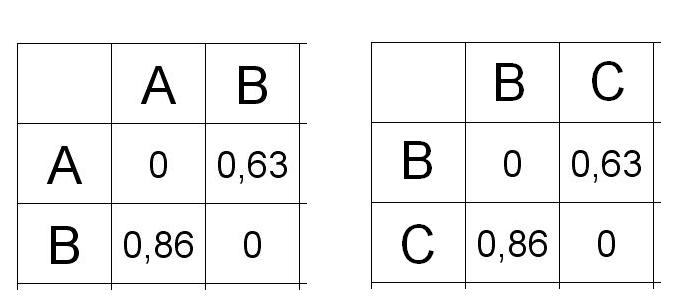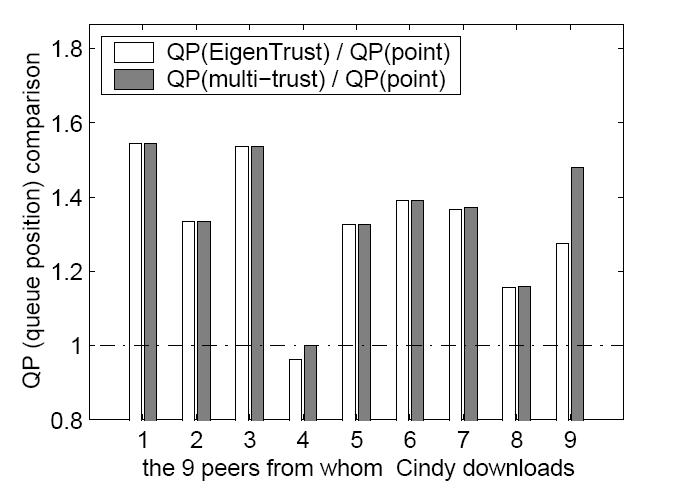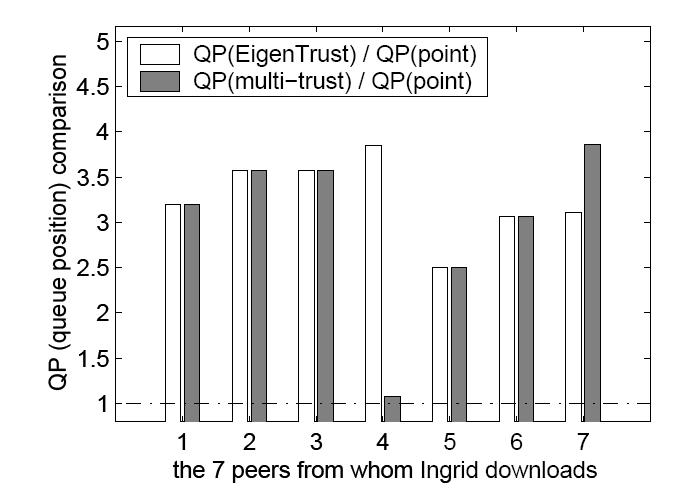Multi-Trust-Incentives
Multi-Trust-Incentives
The major problem of private history based incentive systems like Tit-for-Tat is their coverage. Resolving it requires leveraging other reputable peers’ history which leads directly to the EigenTrust mechanism. Multi-Trust-Incentives try to mix both mechanisms.
Design of Multi-Trust-Incentives
Mathematical View
One-Step-Matrix
| The Evaluation of Trust between peers is measured in a Matrix M. This N * N matrix defines a one-step rank among peers.
All values are measured as the normalized download volume that a peer i has received from a peer j during a period of time. |
Two-Step-Matrix
A two-step-matrix describes the relation in 3 levels.
Implementation
Idea
For a duration of t, a peer i computes his own matrix by normalizing all the downloads it received from a peer j. Periodically i will ask j for j's immediate friends so j computes its own matrix. This process is repeated iteratively until i can not get any more matrices from j.
Data Costs within the Maze
Within the Maze Network a peer i has about 36 friends for one day in average. Gathering Information about one-level friends needs 32KB data space in total. Even with level two, it becomes about 1MB for information about peers. Furthermore a daily update does not produce any significant overhead. But moving to higher levels costs for peer information are progressively growing. In the end this Multi-Trust Incentive was developed just for level two because it already covers more than 60% of total traffic.
Implementation in the Maze
Performance
Coverage Experiment
Leg-Hugger Experiment
Satellite Cluster Experiment
Evaluation
In general private history based incentives like Tit-for-Tat and shared-history based algorithms like EigenTrust have weaknesses. Based on the experiments within the Maze networkt it is considered to mix both incentive systems into the proposed Multi-Trust Algorithm. Such hybrid algorithms achieve the best performance in a P2P network.






